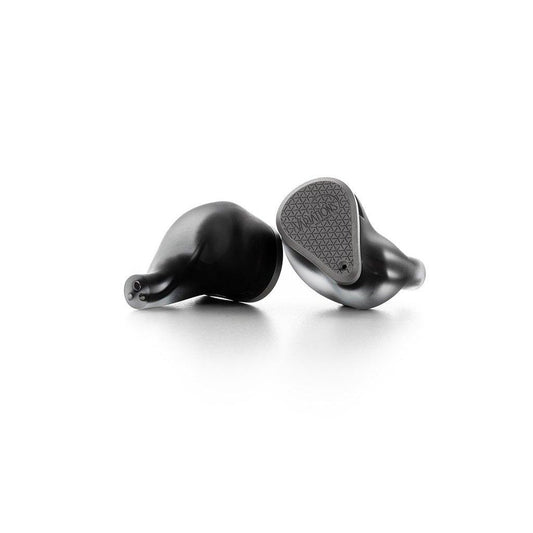Hisenior Mega5EST: Task Failed Successfully
Hisenior claim their $550 tribrid is tuned to Harman's IE Target, yet it has garnered recognition for measuring closely to the beloved—and not Harman IE compliant—Subtonic Storm. Is it Harman? Is it a "baby Storm"? Join listener as they discuss why Mega5EST is one of the happiest accidents in today's IEM market.

Introduction
The Mega5EST is a $550USD IEM made by Hisenior, a brand that’s gone relatively unnoticed in this hobby so far. I only found them thanks to a friend, who sent this unit as part of a tour package (thanks Tam!).
It’s gotten a smattering of hype thanks to it measuring similarly to the near-universally adored Subtonic Storm, so the narrative surrounding Mega5EST is likely best summed up as people calling it a “baby Storm” or “Storm at home.”
However, I think this narrative undersells how novel Mega5EST is in this market, as it’s easily more well-rounded than anything else I’ve heard in this price bracket. I’d even go as far as to say it’s one of the best IEMs I’ve heard in 2023.
So today I want to course correct, and bring a little more context to Mega5EST’s place in the market… where in my view it wipes the floor with its competition. Let’s get into it.
What we like
- Extremely livable comfort
- Exceptionally unproblematic frequency response tuning
- Price appropriate technical performance in almost every metric
What we don’t like
Hisenior Audio Mega5-EST In-Ear Headphones
Ergonomics
Mega5EST boasts an uncommonly small and ergonomically designed shell for something that houses as many drivers as it does. The shell actually reminds me most of my darling Audiosense DT200, which is probably the single most comfortable IEM shell I’ve ever used due to it being incredibly tiny but also very “ear-shaped” in terms of its pseudo-custom molding.
Mega5EST seemingly has a near-identical shape to DT200, but scaled up a little larger all-round. Fortunately, this size increase is basically imperceptible to me, so Mega5EST is just about tied with DT200 for the “Most Comfortable” I’ve tried.
The sizing and shaping is such that I think even those of us with the smallest outer-ears would be able to fit Mega5EST, and honestly that makes it one of the few IEMs out there that gets a 100% passing grade from me for shell ergonomics. I cannot stress enough how uncommon this is in a market dominated by IEMs with massive shells.
When you also consider the beautifully soft (though slightly heavy) cable and the plethora of included eartips, it's really hard to say anything outright harsh about the ergonomics or quality-of-life package that Mega5EST offers. I see vanishingly few people having issues, and so Mega5EST starts this review off with a bang. Well done, Hisenior.
Frequency Response
Harman?
In the product description for the Mega5EST, Hisenior claims that they utilize a “Harman IEM Target Curve-referred tuning.” Is this another entry in the trend of IEMs hitting the Harman Target almost perfectly from top to bottom?
Well, turns out, no… But also, yes? Let me explain.
If Hisenior were going for Harman’s In-Ear Target with the Mega5EST… That’s not what they ended up hitting.
To be fair, I don’t think Mega5EST is incredibly far off from the general idea of Harman. It has the bass boost around 100Hz, with an amount and shape similar to Harman’s IE target. It also has the gradual “ear gain” elevation peaking at around 3kHz, tapering off after that.
I think people that enjoy the very precisely Harman-adherent IEMs like Truthear Nova or Moondrop Variations will also like Mega5EST, as it has implemented what I’d call the “basics of good tuning” that Harman has outlined across their research very well.
However, not only have Hisenior not tuned Mega5EST perfectly to Harman’s In-Ear target, but they’ve pulled off an uncommon feat, stumbling on a tuning more reminiscent of the sound of the less controversial over-ear Harman Target—as shown by Mega5EST’s placement within the preference bounds we use.
What I do know is that regardless of their goals, Hisenior knocked it out of the park with this one. It’s a damn good tuning. It sounds like a coherent, shockingly normal-sounding IEM for my taste, and for that reason I think most people who hear this IEM are generally going to find it pretty hard to fault. Let’s talk about why.
This is a measurement of the Mega5EST measured with a clone IEC 60318-4 coupler mounted in an ear-and-cheek simulator used as a ITU P.57 Type 3.3 Ear Simulator. You might notice the “halfwave” or length mode resonance is shifted lower than our ubiquitous 8kHz reference point. This is a result of using a Type 3.3 system, which more accurately reflects where the length mode may occur in the average ear.
It is calibrated to the 711-compliant version of the “4620 + Human” DF HRTF baseline. This means we’re using a blend of the ear canal of the Type 4620 Ear Simulator with the blocked canal contributions of the ISO 11904:1 Human DF HRTF, and then compensating for 711’s average error below 1kHz so we can analyze 711 IEM measurements against the same preference bounds we use for 5128 measurements.
Bass
As you can see, the bass is comfortably resting in the upper ends of the bounds, but it should be noted that Harman 2015 and 2018 both rest closest to the upper part of these bounds, so instead of seeing this as “very bassy,” it’s both uncontroversially bassy as well as… just not really all that bassy to me.
It’s certainly not the most explosive bass I’ve heard in an IEM, but has a lovely bass tuning that gives the fullness people enjoy with an IEM. It does so while bringing the word “lush” to mind more often than hard, slammy, or heavy—it’s easy to listen with and enjoy, but it’s not gonna blow your hair back or anything.
It lends just enough weight to the kick drum and bass guitar for both to seem distinct, engaging, and bouncy, without miring the rest of the response in a thick fog. If there is a “goldilocks” bass tuning for IEMs, Mega5EST might actually be the closest I’ve heard in an IEM until you get to the really expensive stuff.
Overall I’m really really struggling to find any big issues with the bass presentation here. It’s appropriately punchy for its price point, without being incoherent due to the commonly-found “mid-bass boost + upper-bass tuck” tuning style. It conveys and balances warmth, size, and tactility better than anything else I’ve heard at this price point without compromising too much on any one thing.
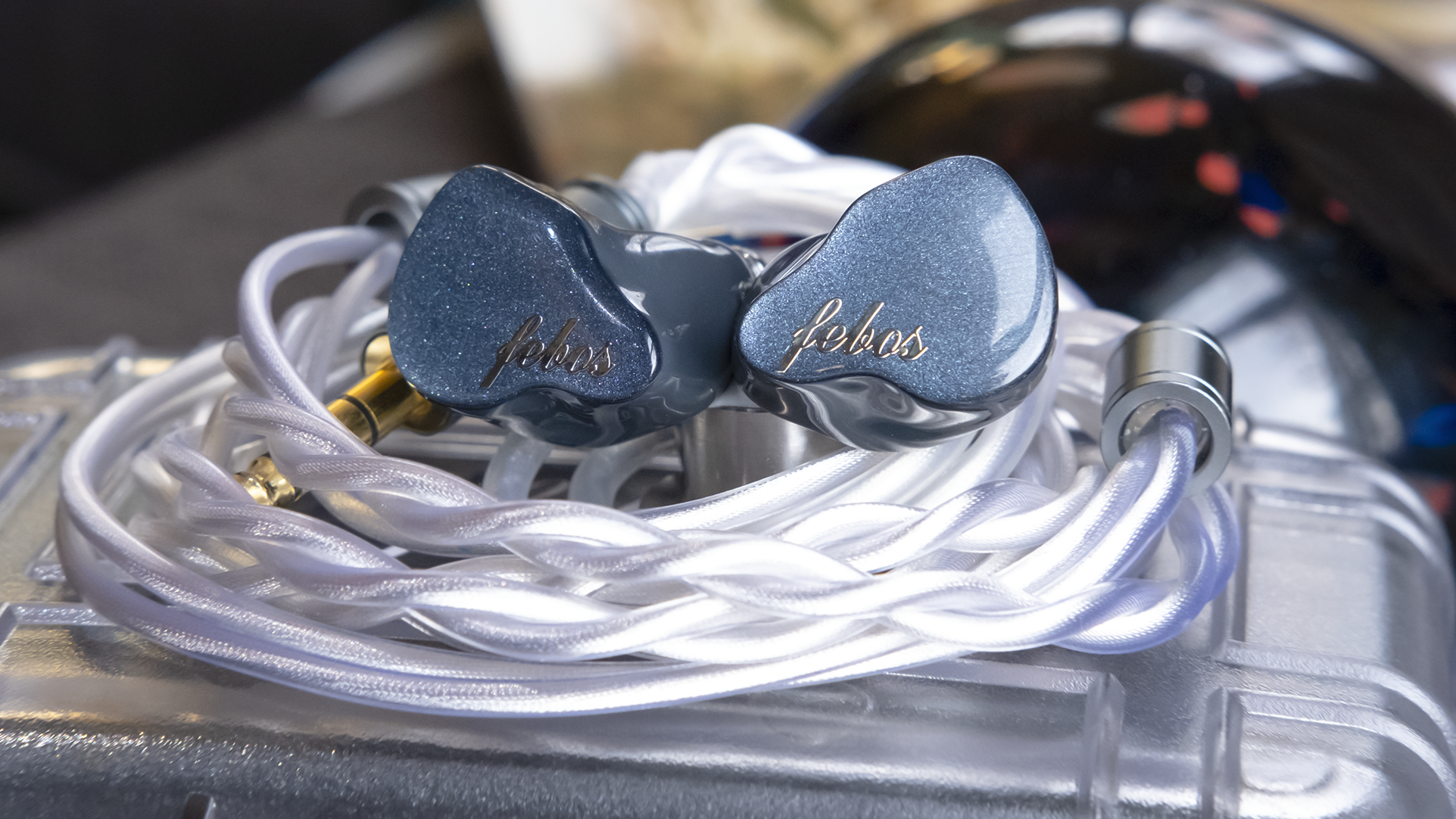
Midrange
While the midrange of the Mega5EST might not be perfect, it’s pretty damn close to ideal for this kind of sound signature. The midrange—and how it interacts with the bass—is what I think sets Mega5EST apart from common recommendations in this price range, namely the Moondrop Variations. We’ll get to that a little later though.
For now, let me cover the bad part first: There is definitely a minor dip in the low midrange that can make certain vocals sound just a teensy bit thin. Some male vocals are just a smidge more translucent than I’d like. However, most IEMs coming out these days are significantly worse performers in this regard.
In fact, Mega5EST probably has a more realistic sounding midrange than (almost) all of the IEMs I’ve heard, regardless of price. Seemingly everything I come across is either sucked out and/or shouty in the midrange, relying on a gargantuan bass to counterbalance, or an abject mud-fest, sporting way too much energy between 100Hz and 400Hz.
Not here. Mega5EST tucks low-midrange by just a hair, so as to not overwhelm the listener with the warmth afforded by its generous (but not overwhelming) bass shelf. As we climb in frequency from here, we run into seemingly no issues: the Mega5EST is extremely well-behaved. This is where we’d usually expect to see either a 1-2kHz or 4-5kHz emphasis on most IEMs but again... Not here. Mega5EST does what many IEMs fail to do, and has an ear gain rise that starts, peaks, and rolls off in the right place.
As we get to the top of the ear gain, Mega5EST dips a bit around 2.5kHz, which in listening actually reminds me again of Harman’s AE/OE target, specifically the 2018 curve that has a 2.8kHz dip on it. It then, unlike many IEMs, doesn’t overshoot our preference bounds in the presence region below 6kHz. We get a relaxed, but appropriate-sounding upper midrange that gives you the important elevation for intelligibility around 3kHz, but does so while not masking this area with excess magnitude in its surrounding areas.
This “easy intelligibility” made vocals incredibly sweet and pleasant sounding compared to the other IEMs I have on hand. Guitars sound textured but not grating, snare drums have the attack they need but no excess rattle, grit or cacophony, and pianos just sound right in terms of balance between upper-midrange transient hardness and lower-midrange bloom and decay.
Though some may find the lack of a presence (4-5kHz) boost causes the Mega5EST to lack textural resolve, I actually find it gives the listener just enough in the upper midrange overtones we need for an accurate picture. It takes care to never commit an extra sense of grain or harshness to the presentation.

Treble
I confess, this is where I began to have issues with Mega5EST at first, as with the 3 pairs of tips I normally like, the 11-12kHz elevation shown on the measurements was *very* audible. I have detailed measurements on my website with all of the tips used, but the short answer here is that Mega5EST does best with a medium-bore tip and a little more front volume length (so longer/stiffer IEM tips might be the ticket).
My preferred tip was the Spinfit CP100+, as its “spring” mechanism and medium bore worked in tandem to curb a bit of the excess mid-treble. If one doesn’t have these tips, the stock Narrow tips are a good substitute, and what I opted to use for the review.
The treble response above 5kHz on the Mega5EST strikes a delicate balance between relaxation and sparkle. It’s a mostly laid-back tune below 10kHz (which I love), but it seems the peak around 11-12kHz is meant to keep the IEM from being too lush or warm. If this elevation weren’t here, many may find Mega5EST straight up “untechnical.” Personally, I could still do with this area being brought down by a dB or two, but I at least understand the choice they made here.
With the narrow tips, the Mega5EST offers a mostly-chill presentation with a hint of spice that actually does what I think the manufacturer intended: it adds some excitement and flavor, and helps unveil more of the smaller, intricate details in the music to keep it from sounding like it has “low-resolution”. Keep in mind that this is coming from the most treble-sensitive reviewer on this website.
Mega5EST’s treble with the narrow tips is even at its worst, pretty darn unobjectionable. The worst it ever got for me was that already “very bright” mixes were definitely pushed to the edge of tolerability, being more sibilant and edgy than I’d prefer. With the CP100+ tips, it becomes excellent even with those mixes. If it shipped with CP100+ tips, Mega5EST, would be one of the only IEMs that gets passing (if not perfect) marks in every area of its tonality from me. But it didn’t, so it gets docked a fraction of a point for not being perfect.
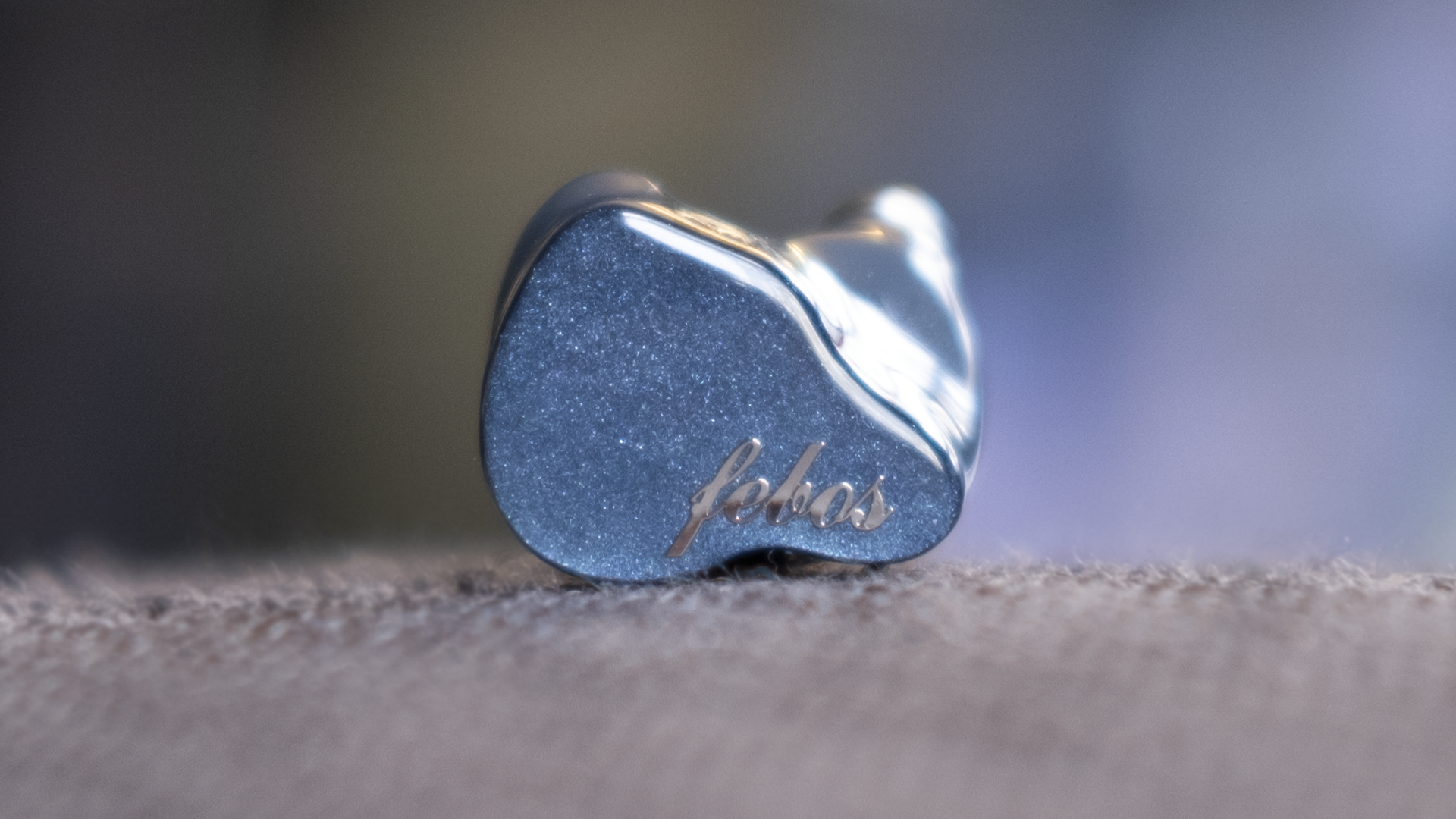
Technicalities
The phrase that came to mind time and time again when judging Meg5EST’s technical performance was—perhaps unsurprisingly—“well-rounded.” It’s definitely not shattering any expectations in any one regard, but as a balance of compromises Mega5EST is pretty hard to beat.
It’s not the most spacious, but it’s exceedingly natural when it comes to front-back placement and feels significantly less claustrophobic than most of the shouty/cold IEMs in this price range (which we’ll expand on in a bit).
It’s not the most detailed, textured or resolving, but it’s about as detailed as I’d expect from an IEM in this range, and does so while not having any of the tonal weirdness most other “more detailed” IEMs will almost certainly have.
It’s not the most dynamic, but it’s still a clear cut above stuff like Moondrop’s Blessing 2 & 3 series, including the Dusk. It has more note weight, tonal density, and attack immediacy than any of them.
Even though it’s tuned similarly to Subtonic Storm, it’s immediately apparent that Storm’s penchant for thundering, mind-shattering transients is nowhere to be found in Mega5EST’s presentation, which opts for a relaxed approach to dynamic contrast instead of one glittered with the same urgency Storm brings to the table.
Mega5EST’s superb tone, comfort, and ease of drivability would’ve been enough to make technicalities very low on my list of concerns… yet it still delivered decent performance across the board anyway! While it doesn’t have much “X factor” to dethrone any other IEMs on the front of technical performance, it does well enough at every technical metric that well-roundedness might actually be the “X factor” that makes people choose it over something else. And on that note…
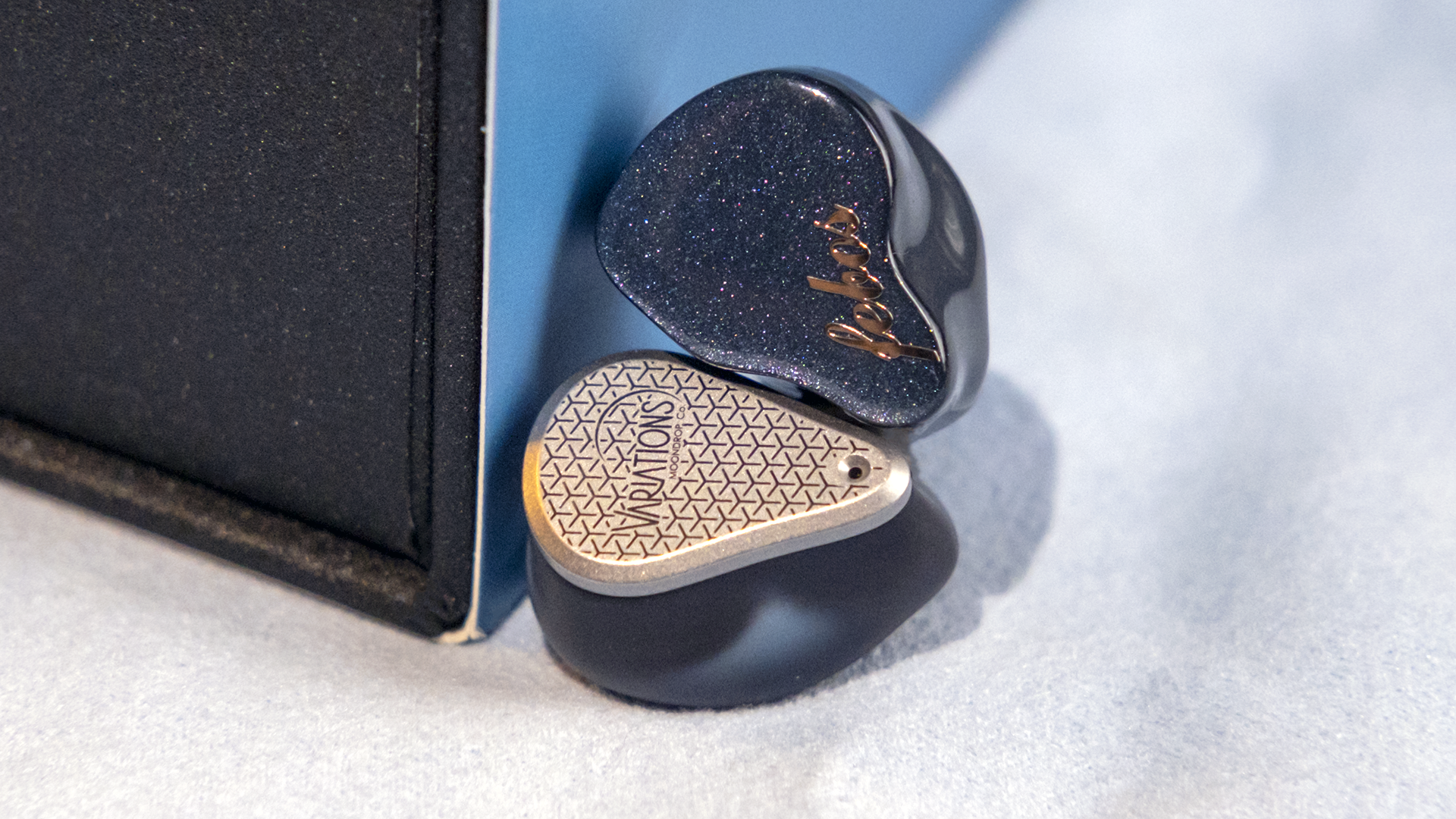
Comparisons
Vs. Moondrop Variations
…God I wish Variations sounded more like this.
Keep in mind that the Variations I have on hand is seemingly a unicorn; I’ve not seen any Variations unit measure as smoothly or politely as mine does between 4-8kHz… but even so, Mega5EST basically fixes Variations’ biggest tonal flaw (too much contrast between lower-midrange and bass/upper-midrange), while having a more comfortable shell and better accessories.
While Variations may sound more “bombastic” to some, having a more forward bass presentation and more hyped midrange. But to me it simply sounds colored. Variations’s treble in particular sounds quite feathery to me, it’s weightless and soft (and sometimes this is a good thing) but it makes transients sound like they’re artificially diffuse and lack precise attack.
Variations may have a more noticeable sense of imaging contrast and separation, but it does so at the cost of sounding fundamentally unnatural for vocals, snare drums, kick drums, guitars, basses, pianos, you name it.
Mega5EST is more natural both in terms of tone as well as stereo placement. Intimacy and distance cues are equally convincing and realistic on Mega5EST, whereas Variations always sounds quite confused about this aspect of imaging, paradoxically throwing the spittle of lead vocals directly in your face instead feeling like you’re being hugged by the warm, cozy fundamentals.
Simply put, unless you’re really into the presentation of Harman’s In Ear target, I regard Mega5EST as an all-around upgrade to the Moondrop Variations.
Moondrop Variations Tribrid In-Ear Headphones

Vs. Kinera URD
I only found out about the URD after working the Kinera booth at CanJam SoCal 2023, but it surprised me with its relaxed, all-rounder tonality that I also think few people would find issues with.
In direct comparison, the URD is a noticeably warmer listen thanks to its precipitous 3kHz recession and reduced mid-treble, and I think for my own personal taste I prefer the URD… but I think many people will likely prefer the Mega5EST’s tuning, as it is a little more exciting and “big” sounding, without sacrificing all that much in terms of naturalness.
If one prefers the tone of the 64 Audio IEMs, the URD might be the better choice. But if one prefers something a little less warm and smoothed, Mega5EST is likely a more “down-the-middle” tonality.
In terms of technical performance, I think Mega5EST wins almost across the board here. It’s more spacious and evenly placed, more dynamic, and more “detailed” and textured in every aspect except for the bass, where I feel URD edges it out slightly in texture.
Regarding comfort though, there’s no contest. URD’s shell is big, clunky, and not especially well-molded to the shape of my outer ear. Mega5EST by contrast is firmly in the conversation of “most comfortable IEMs I’ve ever used”, and I think for that reason as well as its more versatile tuning that Mega5EST is likely the better buy for most people, even if I prefer the URD.
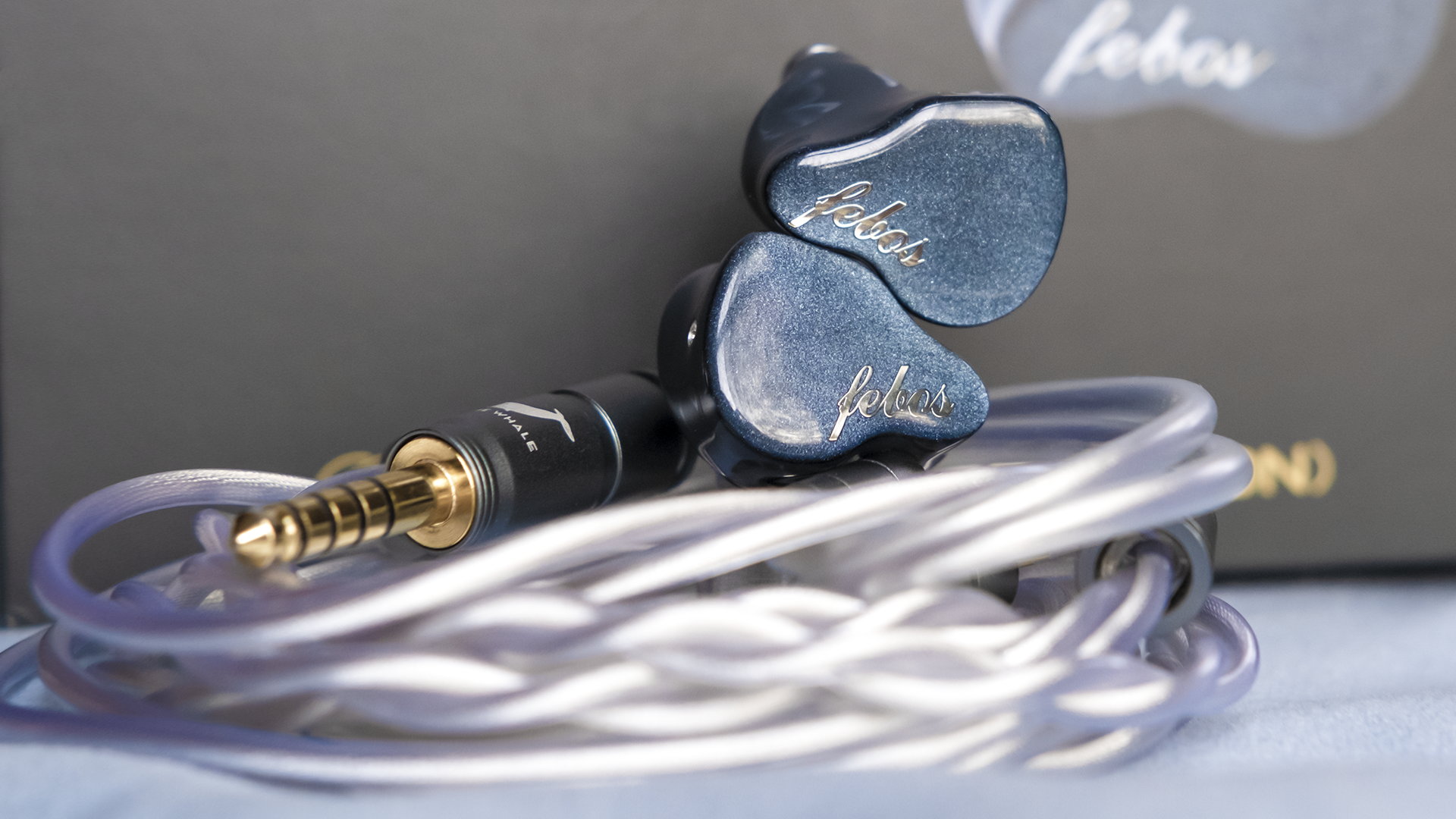
Conclusion
In the realm of sub-$1000 IEMs, the Hisenior Mega5EST makes itself distinct by offering a scarily balanced and well-rounded IEM for its price point. I genuinely had trouble writing this review, but only because I had a hard time finding things to fault with it.
I rarely feel comfortable enthusiastically recommending IEMs over $200 or so; $550 is absolutely a lot of money. However, with its comfortable shell, natural and inviting tuning, and solid technical performance across the board, Mega5EST is probably one of the easiest recommendations I’ve ever given in a review.
This is the all-around “neutral” upgrade path from the Moondrop Blessing 2:Dusk that people have been waiting years for… and it comes not from Moondrop, but from a brand I’m certain very few people would’ve heard of until now.
If you’re the type of listener who really wants some sort of overt coloration to make your music more “fun,” I think you should probably try something else. Symphonium’s Meteor has a ton of bass but still excellent midrange tuning, and the Kinera URD takes a more colored approach to “warm-neutral” that I think many would enjoy too.
But if you, like many people, just want an IEM to give it to you straight, with no frills… You should seriously be considering Mega5EST.
If people want to know what I think IEMs for mass-appeal should sound like, this is the best example I’ve found so far. It’s a stellar package with few glaring faults, a feat seemingly thanks at least in part to not tuning to Harman’s In-Ear target.
Welp. Task failed successfully.

